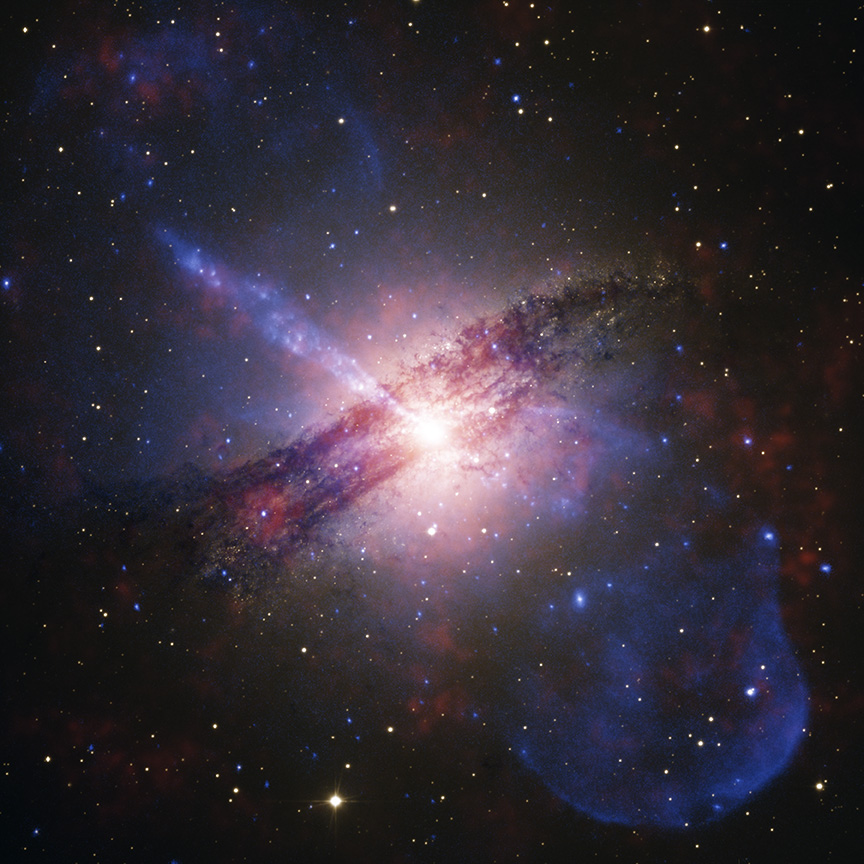CXC: Centaurus A Shines in New Image from Chandra and IXPE
Posted: Tue May 02, 2023 6:33 pm
Centaurus A Shines in New Image from Chandra and IXPE
NASA | MSFC | SAO | Chandra X-ray Observatory | 2023 May 02
Limits on X-Ray Polarization at the Core of Centaurus A as
Observed with the Imaging X-Ray Polarimetry Explorer ~ Steven R. Ehlert et al
NASA | MSFC | SAO | Chandra X-ray Observatory | 2023 May 02
The galaxy Centaurus A (Cen A) shines bright in this image combining data from multiple observatories. In the center of this galaxy is a supermassive black hole feeding off the gas and dust encircling it, and large jets of high-energy particles and other material spewing out. The jet shown at the upper left of this image extends for about 13,000 light-years away from the black hole. Also visible is a dust lane, wrapping around the middle of the galaxy, which may have resulted from a collision with a smaller galaxy millions of years ago.
Colors in this image have been chosen to reflect the sources of data. Blue shows X-ray light captured by NASA’s Chandra X-ray Observatory, orange represents X-rays detected by NASA’s Imaging X-ray Polarimetry Explorer (IXPE) satellite, and optical light seen by the European Southern Observatory in Chile is colored white and gray.
Cen A has been studied extensively since the launch of Chandra in 1999. With IXPE, which launched in 2021, scientists can understand the mysteries of this object in a new way. IXPE is specialized to look at a property of X-ray light called polarization, which relates to the organization of electromagnetic waves. This specialized measurement is helping scientists study how particles become accelerated to high energies and speeds — nearly the speed of light — at extreme cosmic objects like this one. ...
Cen A is found 12 million light-years from Earth in the constellation Centaurus and represents the fifth brightest galaxy in the sky.
Limits on X-Ray Polarization at the Core of Centaurus A as
Observed with the Imaging X-Ray Polarimetry Explorer ~ Steven R. Ehlert et al
- Astrophysical Journal 935(2):116 (2022 Aug 20) DOI: 10.3847/1538-4357/ac8056
- arXiv > astro-ph > arXiv:2207.06625 > 14 Jul 2022
